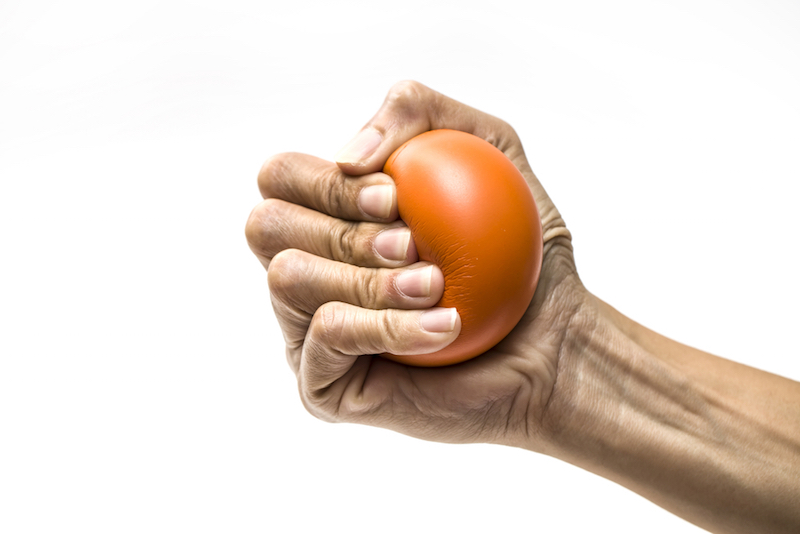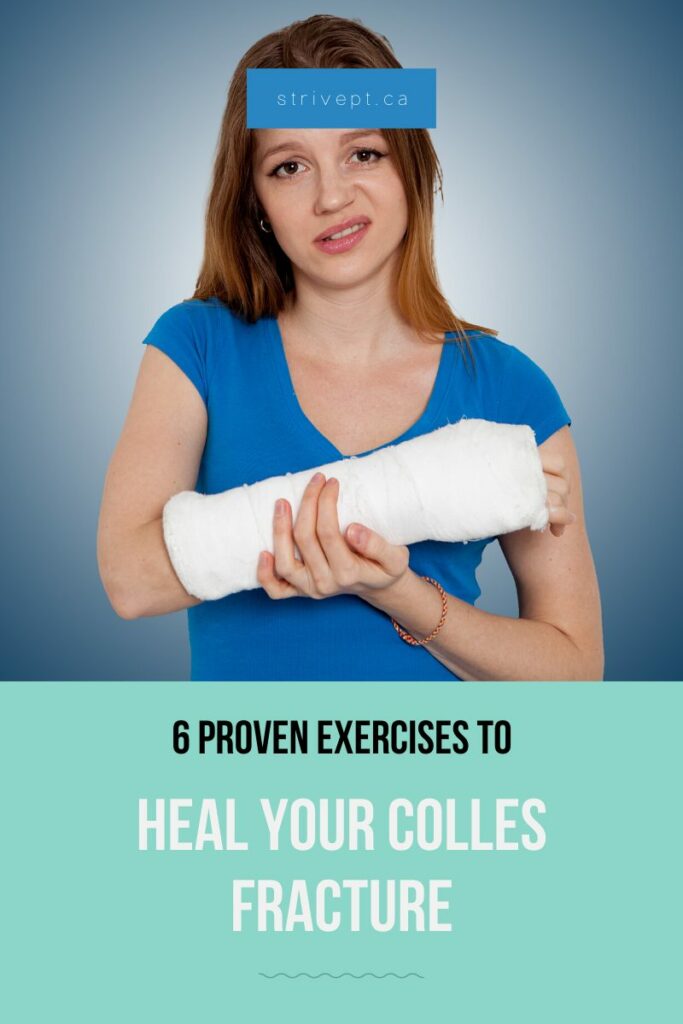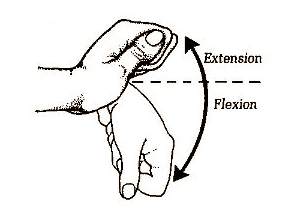Summer has finally arrived! The sun is shining, so we’re all itching to get outside and be active – to play sports, hike mountains, and ride bikes! Unfortunately, sports can lead to hard falls, and we occasionally fall off our bikes. Falling onto an outstretched hand can lead to a Colles’ fracture in your wrist. When talking about bones, “broken” and “fractured” mean the same thing. A “Colles’ fracture” is a type of broken wrist, and I’m going to guide you through the process of a Colles’ fracture from diagnosis to treatment. These are the exact tips and tricks we use every day in the clinic! So you’re going to get some real insider knowledge! I’ve broken this blog down into sections for you:
- Anatomy
- How Do I Know If I Have A Colles’ Fracture?
- What to Expect
- Best Beginner Exercises
- Best Intermediate Exercises
- Best Advances Exercises
Let’s get the boring stuff out of the way first, and take a look at what’s going on inside your wrist right now: 
How Do I Know If I Have A Colles’ Fracture? Wrist Sprain vs. Wrist Strain vs. Wrist Fracture
A broken wrist refers to a bone injury, but how do we know if it’s a bone injury or something different? It’s simpler than you may think. Your three general injuries are fractures/breaks, strains, and sprains. A fracture/break means you injured a bone. Whether it be cracked, chipped, or broken into 2 or more pieces. This is where the Colles’ fracture falls. A strain means you injured a muscle. Muscles are what let us move and control our body movements. Because we can control them, they are considered active structures.
-
- TIP: The ends of muscles turn into the tendons that attach to your bones. So if you injure a tendon, it is typically called tendonitis.
A sprain means you injured a ligament. We are unable to directly control our ligaments, so they are considered passive structures.
-
-
- Your ligaments are what actually hold your bones together.
-
So, how do you know if you have a Colles’ fracture? Great question. First, a Colles’ fracture almost always has an associated “event” or “trauma” – like a fall onto your hand/wrist, or car accident. Whereas muscle or tendon injuries usually come from overloading the wrist (i.e. after a lot of lifting, or gripping). That said, wrist sprains (ligament injuries) also usually have an associated “event”, most commonly when a sudden or gradual awkward movement/twisting of the wrist occurs. Differentiating a Colles’ fracture from a “sprained wrist” can be challenging at times. – but we’ve got you covered. Check it out: 

What to Expect
First of all, the one surefire way to know if you have a Colles’ fracture is to get an xray. Then, the doctor will determine if you simply need a cast, or if you may need surgery. If you don’t require surgery, your bones will be “set” back into place, and your arm will be put in a cast. How long you spend in that cast is actually quite a large variable of 2-12 weeks.Why a huge variable?
-
-
-
- Age – children typically require less time in a cast
- Complications or risk of complications may mean you’re in the cast longer
- Whether or not you had surgery
- Whether or not the bone is healing back together properly (when it’s not healing well it’s usually called malunion or non-union) – if the bone is slow to heal back together, then the cast will be on for longer.
-
-
Note: sometimes you will go in one cast for 1-2 weeks (when the swelling is at its highest), then you’ll get a new, longer-lasting cast once some swelling has subsided. When your bone heals, the surgeon/specialist will take off the cast, and you will start physiotherapy. Depending on your goals, what you want to be able to do with your hand (what you do for work, what sports you play, whether or not there were complications with your fracture/surgery etc), physiotherapy will usually last 1-6 months after your cast comes off. When you will be able to return to work and sports is highly individualized. No surprise there, given a 2-12 week and a 1-6 month variance levels. But enough! Here’s what you really want to know: Disclaimer:There are lots and lots of options for exercises after your cast comes off. The best thing to do is to have a physiotherapist assess your individual situation so that the most individualized plan of care can be created. For the sake of this blog, I will outline 2 beginner exercises, 2 intermediate exercises, and 2 advanced exercises. These are in no way inclusive, and are certainly not for everyone. They are intended to be used for information purposes only, and not as strict medical advice.
Best Beginner Exercises for Healing Your Colles’ Fracture
Ball squeezes
-
-
-
- Get a squishy stress ball and hold it in your hand
- Squeeze it (without pain) and hold for 5-10 seconds. Repeat 10 times. Do 3-5 times per day.
-
-

-
-
-
- Support your forearm, and bend your wrist up and down as far as you can (pain-free).
- You can use your other hand to help it go further. Repeat 10 times in each direction. Rest. Do 10 more in each direction. Repeat 3 times per day.
-
-
Intermediate Colles’ Fracture Rehabilitation Exercises
Wrist flexion and extension with dumbbell
-
-
-
- As above, but hold a dumbbell in your hand. Repeat 2 sets of 10 reps. 2 times per day.
-
-

-
-
-
-
- Hold a hammer in your hand with your elbow bent to 90 degrees.
- Rotate the hammer in each direction. Start with 10 times each way. Do 2 sets. Repeat 2 times a day. The closer your hand is to the head of the hammer, the easier it will be.
-
-
-

-
-
-
-
- Start from your hands and knees if you have to, and try to progress to full push ups (from your toes). Progress to 2 sets of 10 reps. Complete 1-2x/day.
-
-
-
-
-
-
-
-
- Stand on a step in front of a pull up bar. Grab onto the bars so your palms are facing you.
- Pull yourself up, squeezing your shoulder blades together, until your chin is above the bar. Slowly lower yourself back down and repeat.
- Try to progress to 2 sets of 10 reps. Complete 1-2x/day
-
-
-
-



